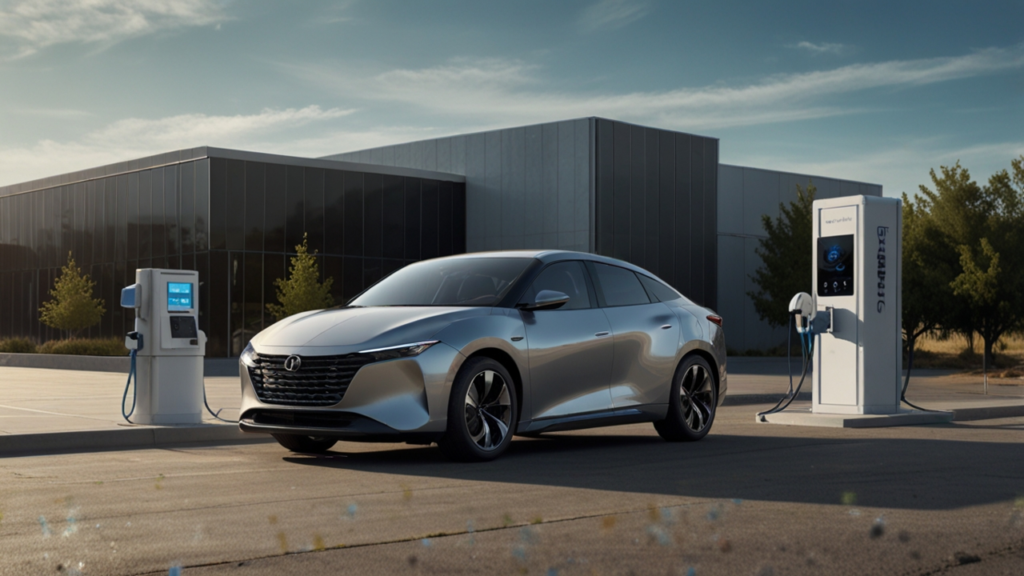Micromobility Trends: 7 Transportation Innovations
Urban areas around the world are witnessing a transformative shift in the way people travel. Innovative small-scale transport options are emerging that integrate advanced technology and eco-friendly designs. This change has inspired significant redesigns in city planning and public transportation systems.
The dynamic landscape of urban travel is being reshaped by ever-evolving electrical propulsion systems, sensor-based navigations, and data-driven fleet management. Cities are now rethinking infrastructure to adapt to these changes. The blend of technology and sustainability is creating solutions that cater to the last leg of daily commutes.
This article delves into the evolution, applications, and future prospects of these transformative transportation models. With in-depth analysis and real-world examples, you will discover how these innovations are influencing every aspect of urban mobility. Have you ever wondered how these small changes can lead to larger, lasting impacts?
Table of Contents
- Introduction to Micromobility Trends
- Evolution and History of Micromobility Trends
- How Urban Transport Enhances Micromobility Trends
- Personal Vehicles Systems and Their Applications
- Real-World Case Studies of Micromobility Trends
- Last-Mile Solutions in Modern Micromobility Trends Solutions
- Future Trends: Sustainable Movement and Beyond
Introduction to Micromobility Trends
Key Concepts and Modern Applications Smart Mobility
Small-scale transport solutions have emerged as a response to congested cityscapes and economic demands for cleaner alternatives. Their integration involves the use of electric propulsion, mobile applications, and real-time tracking systems. With the advent of these solutions, the choice of personal travel has expanded beyond traditional vehicles.
Companies have adopted dockless systems that allow users to easily pick up and drop off vehicles in various locations. This technology relies on sensors and IoT devices to monitor movements and ensure proper maintenance schedules. Device connectivity and precise location data are critical elements driving efficiency.
Modern applications include the deployment of shared electric scooters, bicycles, and even emerging personal transport pods. These systems are supported by policy initiatives aimed at reducing carbon emissions and improving urban traffic flow. Could these innovative systems completely revolutionize how cities function in the future?
For more information, check this detailed study on market trends [Future Market Insights].
Technological Integration and Industry Impacts
Recent technological innovations have transformed the way small transport fleets are managed. Integrated GPS systems and mobile applications have streamlined the rental process, while IoT devices provide valuable data analytics for fleet operators. This integration ensures that vehicles are monitored in real time, which helps in maintaining a robust service network.
Furthermore, evolving safety protocols leverage AI for sidewalk detection and automatic speed regulation, as demonstrated by major operators like Bird and Lime. These enhancements minimize risks and increase ride efficiency while ensuring regulatory compliance. In parallel, enhanced payment systems enable contactless transactions, supporting a seamless user experience.
The industry impact extends to urban planning, where data from these innovations assist policymakers in designing safer, efficient transit routes. With enhanced oversight, cities are better equipped to respond to changing mobility patterns. What can be the next breakthrough in combining technology with everyday travel?
Evolution and History of Micromobility Trends
Early Adoption and Pioneering Initiatives Urban Transportation
The evolution of micromobility can be traced back to early bike-sharing programs in European cities like Paris and Amsterdam. These initiatives laid the groundwork for modern solutions by demonstrating how communal access to bikes could alleviate urban congestion. Early systems were manually operated with limited technological support.
As mobile phone adoption increased, technological enhancements enabled better tracking and user engagement. There was a significant transition from manual oversight to the integration of GPS and app-based systems. This shift was crucial in expanding scale and operational efficiency.
Notably, Asian cities like Beijing and Shanghai quickly embraced dockless bike systems. These technologies were facilitated by government support and private sector innovation, rapidly establishing the model for today’s micromobility. Have you ever experienced the convenience of such streamlined services in an urban setting?
For more details about early initiatives, see the analysis on automotive trends [IAA Mobility].
Technological Leap and Policy Integration
Post-2015, cities witnessed rapid acceleration in micromobility with the introduction of dockless electric scooters and e-bikes. This period marked an important technological leap as integrated mobile apps and wireless connectivity spurred mass adoption. Users now enjoy unprecedented convenience in managing trips with a simple tap on their smartphones.
Policy changes accompanied these technological advances. Governments and urban planners collaborated with operators to mitigate safety and regulatory concerns, ensuring that technology was implemented effectively. Infrastructure was redesigned to provide dedicated lanes and better parking solutions.
Drivers and users alike experienced significant improvements in operational safety. The evolution of policy frameworks combined with technology has continuously refined the delivery of these services. How might future technology further influence policy and regulation in urban mobility?
A deeper discussion is available at Rutgers Policy Lab [Policy Innovations].
How Urban Transport Enhances Micromobility Trends
Integration with Public Transit Networks Electric Vehicles
Urban infrastructural networks now integrate small transport options with existing public transit systems. Seamless transfers between dedicated transit modes and micro solutions improve overall network efficiency. In many cities, the combination of these systems reduces reliance on private vehicles.
The integration is achieved through unified payment systems and trip planning applications that combine different transit options into a single experience. Riding an electric scooter after a metro ride is now easier thanks to shared digital ticketing systems. This strategic integration helps reduce congestion and promotes greener travel options.
Advanced communications between micro systems and primary transit services allow for real-time updates. These efforts significantly bolster safety and traffic management. How do you think integrated systems can further streamline daily commutes?
For further insights, check Bird Innovation [Safety Innovations].
Enhancing Safety and Payment Systems
Urban areas are witnessing the adoption of safety technologies such as advanced telematics, AI-powered crash detection, and computerized rider behavior analytics. These systems provide immediate alerts and help improve overall passenger safety. Furthermore, the implementation of digital geofencing ensures that vehicles remain within designated areas.
Payment integration has become an essential component of the micromobility experience. With contactless and unified payment methods, users can shift effortlessly between modes of transit. These solutions not only enhance the user experience but also reduce operational friction.
The combined effect of improved safety and streamlined payments results in higher adoption rates among users. By addressing concerns of both riders and regulators, cities continue to invest in these advanced technologies. What additional features do you think could further enhance safety in urban travel?
Personal Vehicles Systems and Their Applications
Technologies Behind Personal Mobility Pods Future Transport Solutions
Personal mobility pods represent the next frontier in individual transport solutions. These compact, single-person vehicles offer an innovative alternative for short commuting distances. They harness cutting-edge electrical propulsion and lightweight designs to maximize efficiency.
Currently in prototype stages, these pods are being tested in select smart cities. The primary goal is to create a sustainable solution that reduces reliance on conventional vehicles. Their development involves rigorous R&D and collaboration with technology partners.
Early trials indicate promising results in terms of maneuverability and energy savings. In controlled environments, they have demonstrated the ability to navigate crowded urban areas effectively. Do you see potential in adopting personal pods as part of your daily commute?
Learn more about evolving tech at Lime Innovation [Tech Innovations].
Foldable Designs and Compact Innovations
Innovations in design have led to the creation of foldable electric scooters and bikes, ideal for areas with limited space. These designs combine portability with modern materials to create lightweight yet durable vehicles. Foldable models have become especially popular in cities with high population density.
Their compact design allows for easy storage and integration with public transportation, solving the issue of restricted urban space. Many cities now include designated parking areas equipped with smart geofencing that guides where these vehicles can be parked. The user-friendly design makes them an attractive option for commuters.
With a focus on maintaining structural strength while ensuring maximum convenience, manufacturers continue to refine these designs. Can this innovative approach help reduce clutter on urban sidewalks?
Real-World Case Studies of Micromobility Trends
Success Stories from Major Global Cities Digital Transformation
Several cities have successfully integrated micromobility solutions into their urban transport landscape. In Paris, for example, car lanes were repurposed to accommodate e-scooters and bicycles. This initiative resulted in a notable 15% reduction in short-distance car trips.
Similarly, Seoul has integrated shared e-bikes with their metro systems by deploying foldable models near transit hubs. This was associated with a 20% increase in public transport usage for last-mile connections. Such case studies highlight the real-world impact and potential of these systems.
New York City is experimenting with pilot programs where e-scooter sharing in outer boroughs is combined with smart parking and AI safety monitoring. Approximately 30% of participants reported replacing car trips with these innovative solutions. Have you observed similar trends in your city?
For added context, refer to insights from O-CITY Trends [Urban Trends].
Comparison Table of Global Case Studies
Comprehensive Comparison of Case Studies
| City | Initiative | Impact | Year |
|---|---|---|---|
| Paris | E-scooter integration | 15% car trip reduction | 2020 |
| Seoul | Foldable e-bike deployment | 20% transport usage increase | 2021 |
| New York City | Smart parking & scooter trials | 30% car trip replacement | 2021 |
| Sydney | Phased safety rollout | Low accident rates | 2022 |
| Amsterdam | Long-running bike-sharing | Enhanced public transit integration | 2019 |
{
“@context”: “https://schema.org”,
“@type”: “Table”,
“about”: “Global Micromobility Case Studies”,
“name”: “Comparison of Global Micromobility Initiatives”,
“description”: “This table compares various micromobility initiatives around the world based on their impact and implementation year.”,
“abstract”: “An organized overview of micromobility initiatives providing insights into their effects on urban transport systems.”
}
What innovations from these examples would you like to see implemented in other cities?
Last-Mile Solutions in Modern Micromobility Trends Solutions
Innovations in Last-Mile Connectivity
One of the most significant challenges in urban transport is the last-mile connectivity. Recent solutions integrate small-scale options with major transit hubs, ensuring passengers can easily complete their journeys. Advanced applications such as unified ticketing and mobile payment systems make transfers seamless.
This connectivity offers convenience to commuters by reducing travel time and dependency on cars for short distances. Operators have introduced smart parking mechanisms to enhance safety and reduce sidewalk clutter. The progress in digital transactions has made these systems user-friendly and efficient.
Innovative infrastructural changes have supported the development of overlapping networks. How do you think next-generation solutions can further alleviate urban congestion for the last mile?
Impact on Urban Lifestyle and Sustainability
Effective last-mile services not only ease commuting but also contribute to broader sustainability goals. The integration of shared micro transport options with public transit contributes to the reduction of greenhouse gas emissions and fossil fuel dependency. This eco-friendly trend demonstrates a progressive shift toward greener urban living.
The convenience of these services encourages a move away from private vehicle ownership, fostering community-oriented practices. Environmentally conscious users find these alternatives appealing for reducing their carbon footprints. The positive impact on urban quality of life is significant and measurable.
What lifestyle changes might emerge as cities continue to invest in these last-mile innovations?
Future Trends: Sustainable Movement and Beyond
Advanced Technologies and AI Innovations Smart Mobility
Looking forward, advanced technologies will continue to evolve and shape urban transportation. Artificial intelligence is set to drive improvements in predictive maintenance, automated rebalancing, and enhanced route planning. These systems will further optimize energy usage and improve safety measures.
The integration of AI with IoT will facilitate better fleet management and individual vehicle tracking. Self-driving capabilities and autonomous recharging systems are under rigorous development by innovative tech companies. With such advancements, the future might see fully autonomous small-scale transport systems operating in tandem with public transit networks.
This ongoing convergence of technologies is paving the way for a dramatic shift in urban travel patterns. What new features would you like to see integrated into our cities of tomorrow?
Sustainability Initiatives and Regulatory Outlook
Government policies and sustainability initiatives are instrumental in shaping the future of urban mobility. As cities intensify efforts to reduce carbon emissions, regulations are becoming more robust. Future policies are likely to focus on low-emission zones and dedicated transit corridors, thereby improving overall air quality.
Regulatory bodies are also participating in industry discussions to continuously refine safety norms and operational guidelines. This collaborative effort between private companies and public agencies helps in devising strategies that cater to both immediate needs and long-term goals. Innovation in recycling technologies and local manufacturing of sustainable batteries further illustrate the commitment to environmental preservation.
How might future policy changes influence your travel habits in urban areas?
Micromobility Trends: A Captivating Glimpse into Tomorrow
This section offers an insightful preview into dynamic changes that are quietly revolutionizing the way we experience mobility. The narrative weaves together an array of fascinating transformations observed at the crossroads of technology and urban efficiency. With evolving digital systems and novel design principles, a fresh perspective on everyday journeys is emerging. The focus is on streamlined approaches that blend effective strategies and creative solutions, eventually leading to playfully reimagined urban landscapes.
The conversation centers on a gradual adaptation where traditional systems yield to innovative practices that are reshaping routines in subtle yet impactful ways. Many consider that the forward-thinking spirit behind these shifts is more than just a technical adjustment; it is a step toward a redefined standard in communal interactions and civic planning. This emerging framework offers intriguing glimpses into scenarios where everyday commutes become engaging experiences infused with forward-looking practices.
Remarkably, early observations reveal that these systems foster a sense of community and shared responsibility. A notable trend is the increased incorporation of design aspects that prioritize ergonomic usage with optimum efficiency. Early adopters have noted enhancements in convenience and overall satisfaction, marking a transition from conventional approaches to more fluid and accessible transport modalities.
It is exciting to consider that these subtle innovations may soon translate into transformative social and economic dynamics. The blend of intelligence and creativity provides an opportunity for holistic shifts in how community landscapes adapt. This narrative invites reflection on how seamless coordination and informed decision-making can open doors to a revitalized future, setting the stage for unprecedented progress and innovation.
Ultimately, this promising trend could spark enduring change across the board, underscoring its potential to influence a multitude of areas with lasting effect.
FAQ
What defines these emerging transportation innovations?
These innovations refer to small-scale, tech-driven travel solutions that operate on principles of efficiency, sustainability, and smart integration with existing urban transport systems. They focus on compact designs, digital interfaces for payments and tracking, and often rely on electric propulsion.
How did such services become popular?
The popularity grew through early bike-sharing systems in European urban centers, followed by technological advances such as GPS tracking, IoT integration, and appealing safety features. Policy incentives and changing commuter preferences have also contributed significantly.
What role does technology play in these systems?
Technology is central, enabling real-time tracking, digital payments, AI-based safety features, and seamless connectivity with public transit networks. This ensures efficiency and improves the overall user experience.
Are these innovations sustainable in the long run?
They are designed with sustainability in mind, emphasizing reduced emissions, energy efficiency, and materials recycling. Government policies and market demand further support their long-term adoption.
How can communities benefit from adopting these innovations?
Communities benefit through reduced traffic congestion, improved air quality, enhanced public safety, and more efficient travel options. They also encourage community engagement with progressive urban planning initiatives.
{
“@context”: “https://schema.org”,
“@type”: “FAQPage”,
“mainEntity”: [
{
“@type”: “Question”,
“name”: “What defines these emerging transportation innovations?”,
“acceptedAnswer”: {
“@type”: “Answer”,
“text”: “They refer to small-scale, tech-driven travel solutions emphasizing efficiency, sustainability, and smart integration with existing systems.”
}
},
{
“@type”: “Question”,
“name”: “How did such services become popular?”,
“acceptedAnswer”: {
“@type”: “Answer”,
“text”: “Their popularity grew through early bike-sharing successes, technological advances, and supportive policy initiatives.”
}
},
{
“@type”: “Question”,
“name”: “What role does technology play in these systems?”,
“acceptedAnswer”: {
“@type”: “Answer”,
“text”: “Technology provides real-time tracking, digital payments, AI-based safety measures, and seamless transit connectivity.”
}
},
{
“@type”: “Question”,
“name”: “Are these innovations sustainable in the long run?”,
“acceptedAnswer”: {
“@type”: “Answer”,
“text”: “Yes, they focus on energy efficiency, lower emissions, and incorporate recycling practices, supported by government policies.”
}
},
{
“@type”: “Question”,
“name”: “How can communities benefit from adopting these innovations?”,
“acceptedAnswer”: {
“@type”: “Answer”,
“text”: “Communities benefit through reduced congestion, lower air pollution, and more efficient and enjoyable travel experiences.”
}
}
]
}
Conclusion
Micromobility trends, as demonstrated throughout the article, are rapidly altering the landscape of urban transportation. The integration of innovative technologies, supportive policies, and sustainable practices is reshaping how we move in modern cities.
You’ve seen real-world applications, case studies, and predictions that underscore this transformative trend. As these developments continue to evolve, how will you adapt to and benefit from these changes?
For more information on how urban transport is advancing or to share your thoughts, feel free to Contact us. Also consider exploring more on Future Mobility for additional insights.
Discover more from Fabelo.io
Subscribe to get the latest posts sent to your email.



